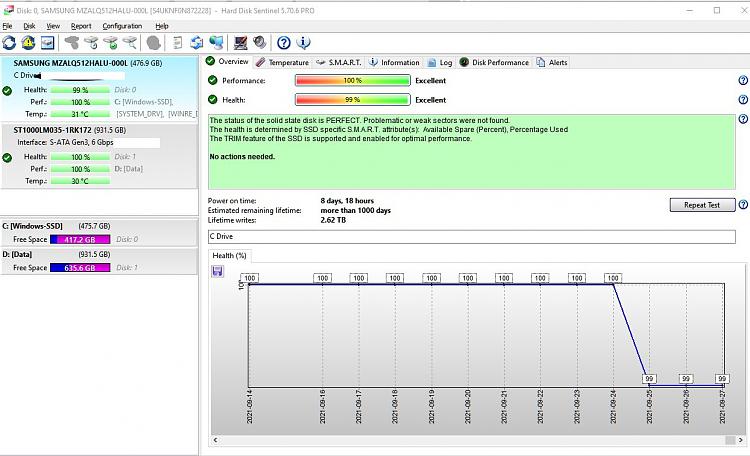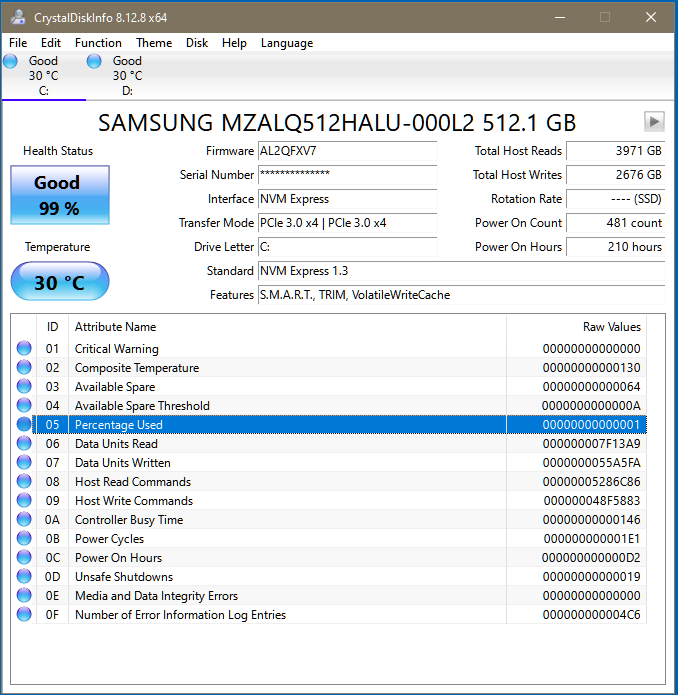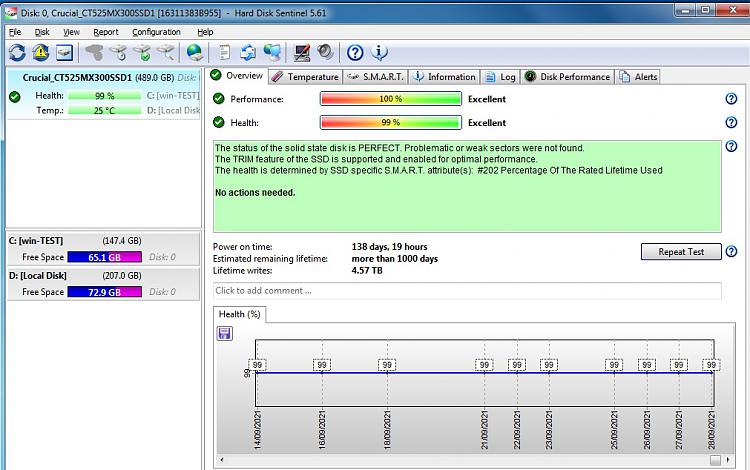New
#1
Windows and Drive health (life)
I recently had a very unusual encounter with Windows 10 and a large file which I was downloading.
After the large 500MB+ file finished downloading using an download manager, I noticed the file wasn't saved in the pre-selected drive (D). It was on C drive.
I then went to move the file to D but I wasn't able to. I tried to rename the file because it was a long name, but I couldn't.
I suspected maybe malware so I ran a malware scan, nothing was found.
I used a utility called Lockhunter and it didn't show the file was locked in any way. I then proceeded to boot into Safe Mode. I couldn't delete the file or rename it.
I then used a File Shredder utility that uses predefined algorithms. I used DoD to make many passes. This deleted the file.
However, upon rebooting to NORMAL Windows, my third party drive monitoring utility immediately gave me an error that my NVMe drive health dropped from 100% to 99% just like that, after reboot and deleting the problematic file.
My NVMe drive and laptop are less than 6 months old. The amount of terabyte writes (TBW) on the drive are few — 2.6TB. I searched online any many users have their SSDs/NVMe for many years with hundreds of TBW. Yet they still have 100% drive health when using these utilities..
My results are consistent amongst the different applications mentioned in that post. The normal "response" from what I have seen is SSD/NVMes have limited number of TBW but in my situation, that doesn't seem to apply as I am no where near the limitations and others with 100% health far exceed 2.6 TBW.
As such, does anyone have any insight what could've "locked" this file and why it couldn't be removed even though Lock Hunter didn't identify the file as being locked. just the opposite.
I also learned something that NVMe drives have "spares" a certain number of areas on the drive that are used when necessary. In my case, my 500 GB drive only has 10 spares. Using one (out of ten spares) caused the health of my drive to drop 1%. No other issues were found when I tested the NVMe extensively with many third party drive utilites and Windows too.
Finally, what would've happened if I left the file alone, would Windows eventually be able to "fix" it on it's own? I want to avoid this situation in the future and I would rather not go nuclear and reinstall Windows.


 Quote
Quote



